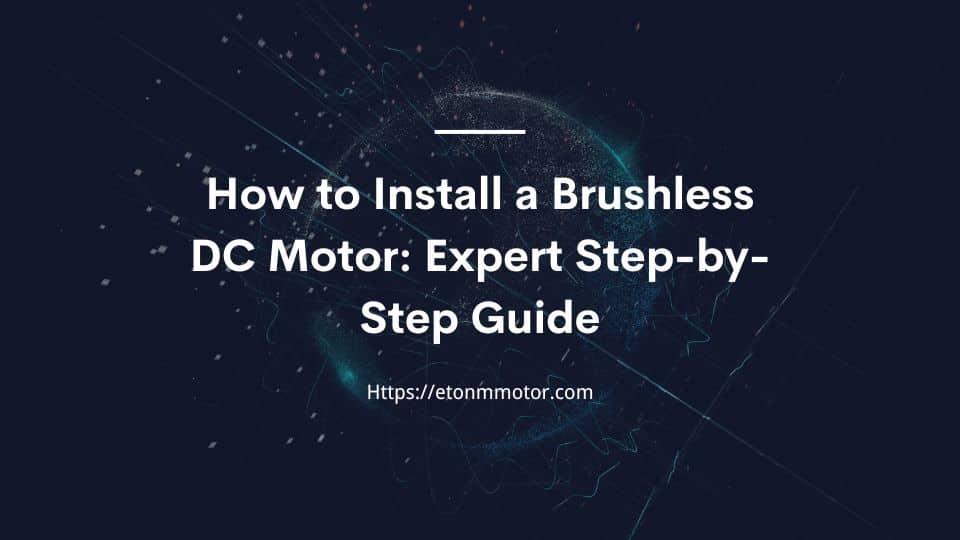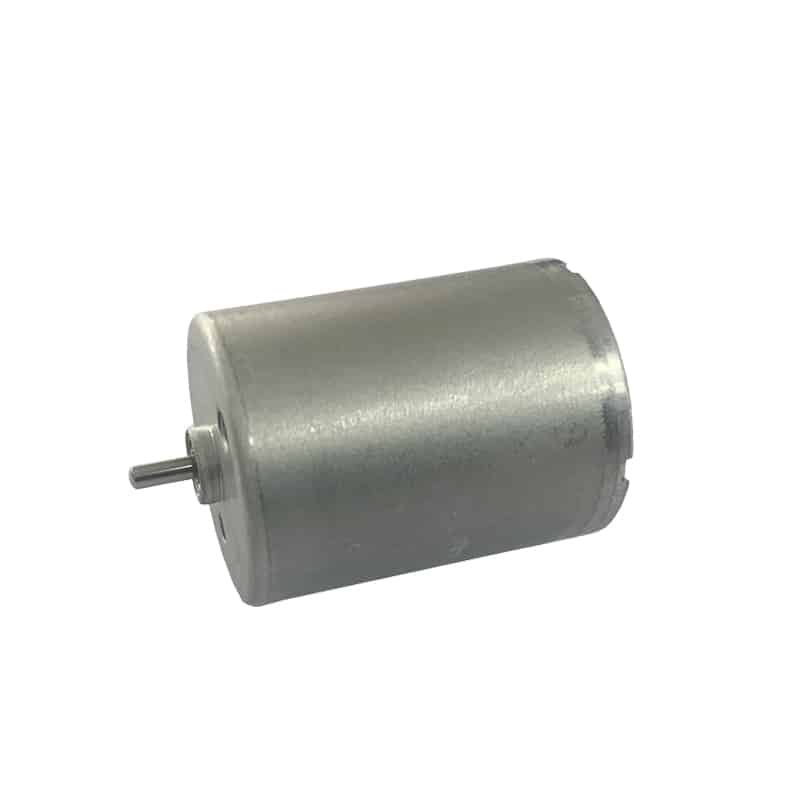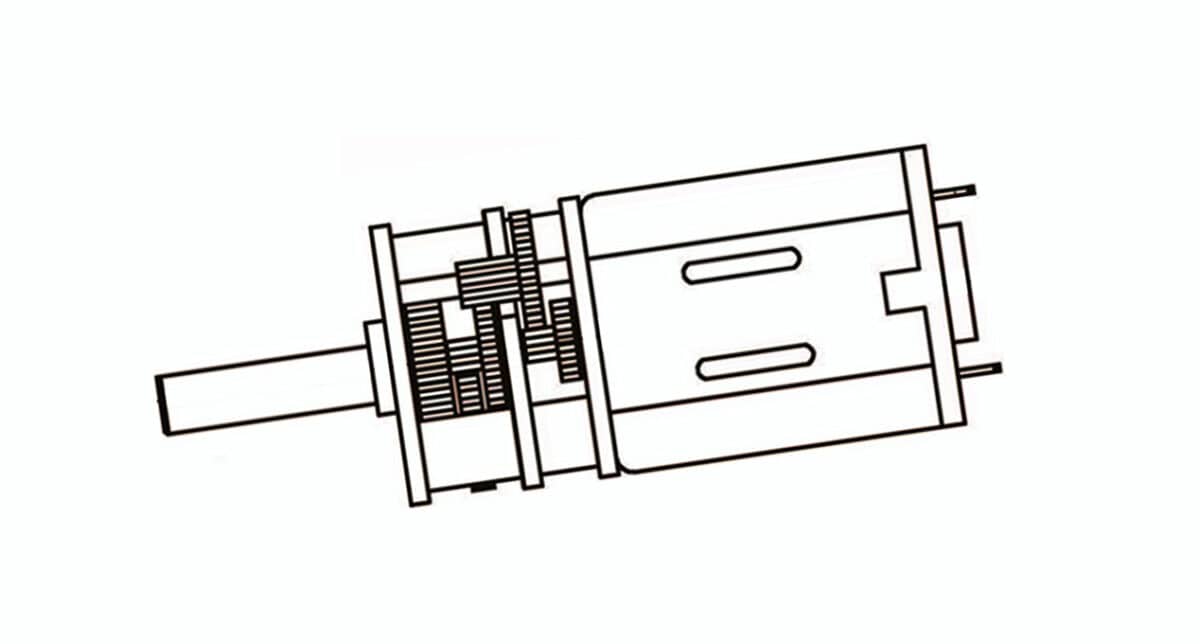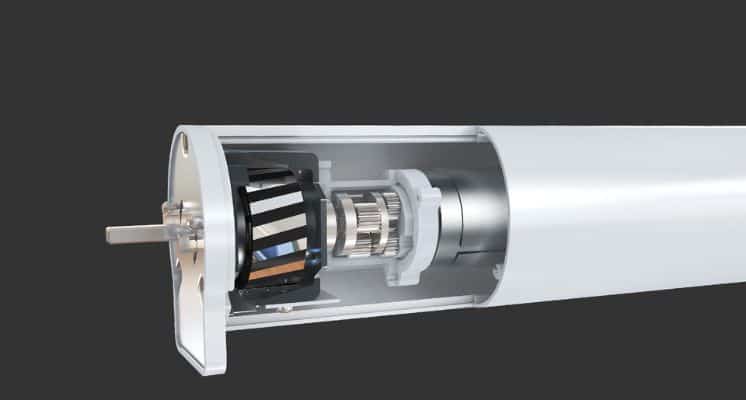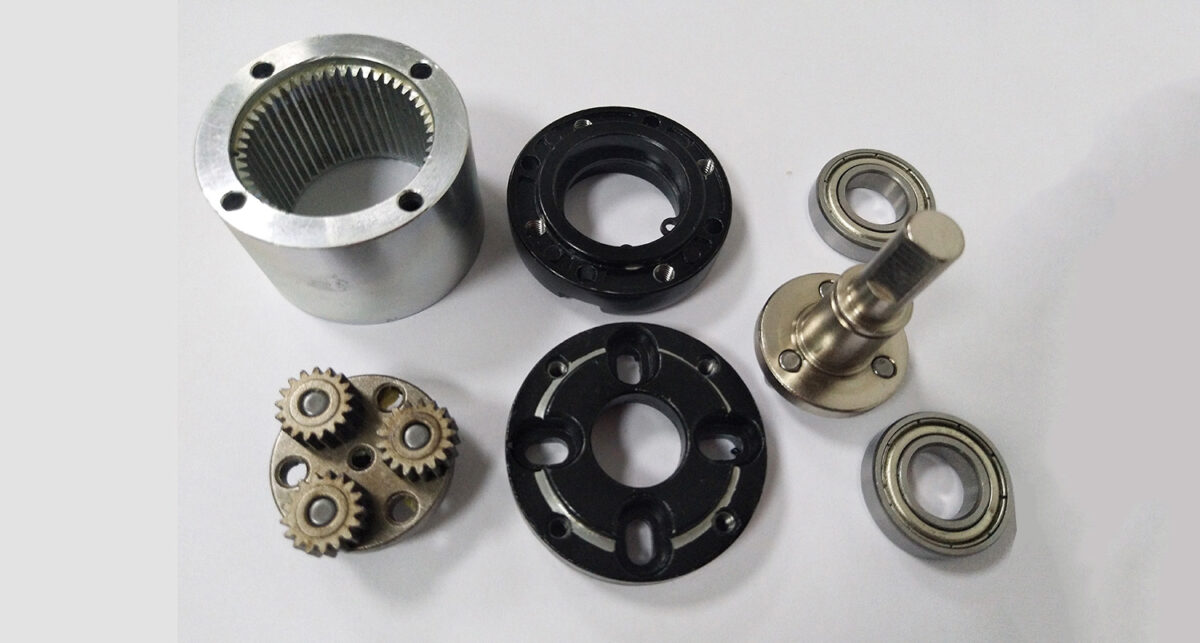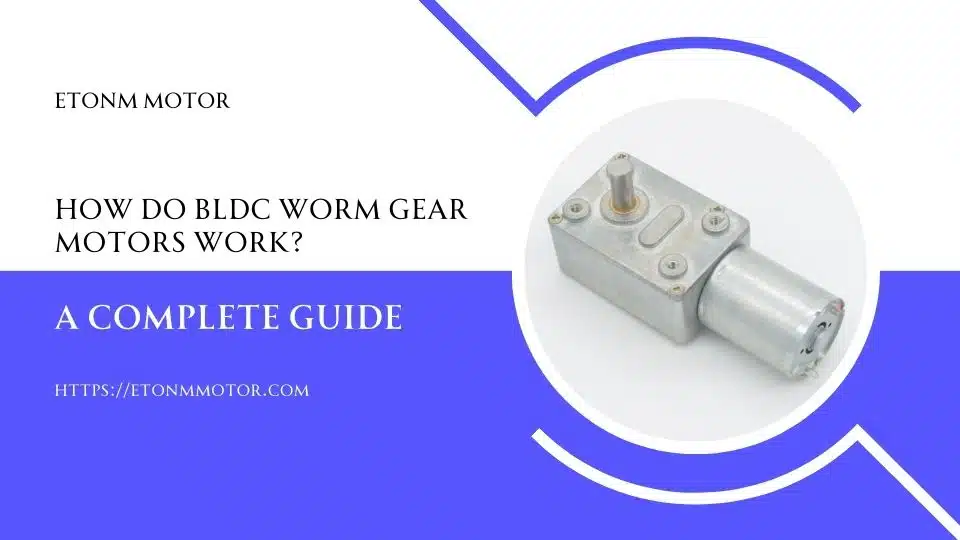Learn how to install a brushless DC motor safely and efficiently. Follow our step-by-step guide for BLDC motor setup, wiring best practices, and avoiding common installation errors.
Table of Contents
Why Brushless DC Motors Are Revolutionizing Modern Technology
Picture this: You’ve just unboxed a sleek new robotic arm for your smart factory, or maybe you’re upgrading your home’s automated security system. At the heart of these innovations? A brushless DC motor (BLDC)—a powerhouse of efficiency, durability, and precision. Unlike traditional brushed motors, BLDC motors eliminate friction-prone components, making them ideal for applications like medical devices, smart home systems, and even robotics (yes, the same tech Etonm Motor has been refining for over a decade!).
But here’s the catch: Even the most advanced brushless motor won’t perform optimally if installed incorrectly. A misaligned shaft or a reversed wire can lead to overheating, reduced lifespan, or worse—a costly system failure. That’s why getting the installation right isn’t just a “nice-to-have”; it’s critical for unlocking the full potential of your BLDC motor.
In this guide, we’ll cut through the technical jargon and walk you through a foolproof installation process. Whether you’re a DIY enthusiast tinkering with a 3D printer or an engineer integrating motors into industrial machinery, these steps will save you time, money, and headaches.
Fun Fact: Did you know BLDC motors can achieve up to 90% energy efficiency? That’s 30% higher than brushed motors! (Psst… Want to see how? Explore Etonm’s BLDC motor catalog for real-world examples.)
Pre-Installation Checklist – Don’t Skip This!
What You’ll Need Before Turning a Screw
Installing a brushless DC motor isn’t rocket science, but winging it without preparation? That’s a recipe for sparks (literally). Let’s get your toolkit and knowledge base ready to avoid those “oops” moments.
Tools & Safety – Your Non-Negotiables
Tools You Can’t Ignore
- Torque Wrench: Over-tightening bolts can warp the motor housing. Aim for 2–4 Nm (check your motor’s manual – yes, actually read it!).
- Multimeter: For verifying voltage and continuity. Pro tip: Test your controller’s output before connecting the motor.
- Thermal Paste: BLDC motors hate heat pockets. A pea-sized dab on the mounting surface improves heat dissipation.
- Anti-Static Wristband: Static kills electronics faster than you can say “$200 down the drain.”
Safety First, Always
- Power Off, Tools Out: Unplug everything – even low-voltage systems. A colleague once fried a medical device motor by forgetting this step.
- Workspace Setup: Clear debris, secure the motor with clamps, and keep a fire extinguisher nearby (better safe than sorry).
Funny Anecdote Alert: “I once saw a DIYer use duct tape to mount a BLDC motor. It worked… for 10 minutes. Don’t be that person.”
Understanding Your BLDC Motor – Speak Its Language
Decode the Nameplate
Every Etonm Motor brushless DC motor has a nameplate with hieroglyphic-like codes. Here’s your cheat sheet:
- Voltage Range: Exceeding this? Say hello to burnt windings. Example: Etonm’s ETM-42BL runs on 12–24V DC.
- RPM & Torque: A 3000 RPM motor for a vending machine? Perfect. For a heavy-duty robot arm? Maybe not.
- IP Rating: Dust and water resistance matter. IP65 motors thrive in outdoor security systems; IP20 is for clean labs.
Why the Datasheet is Your Best Friend
Skip the datasheet, and you’re gambling with performance. For instance, Etonm’s BLDC motors for electric valves require a specific PWM frequency (20 kHz) to avoid harmonic interference. Miss that detail, and your valve might stutter like a nervous karaoke singer.
What’s Next?
Now that you’ve got your tools lined up and specs decoded, it’s time to get hands-on. Up next: Step-by-step mounting, wiring secrets, and how to avoid the #1 mistake beginners make.
Step-by-Step Installation Guide – Get It Right the First Time
From Box to Power-Up: A No-Fluff BLDC Motor Setup
Installing a brushless DC motor isn’t just about screws and wires—it’s about precision. A single misstep here could turn your high-efficiency marvel into a pricey paperweight. Let’s break it down like a pro.
Step 1 – Mounting the Motor: Stability is King
Aligning Shafts: The 0.1mm Rule
First, grab your motor and mounting bracket. If you’re pairing it with a gearbox (like Etonm’s planetary gear motors), ensure the shafts are aligned within 0.1mm tolerance. Use a dial indicator to check runout—even a tiny wobble can wear out bearings faster than expired milk.
Securing Brackets: Torque ≠ Muscle
Tighten bolts in a star pattern (think car wheels) to distribute pressure evenly. For Etonm’s compact BLDC motors (e.g., ETM-24BL), aim for 2.5 Nm torque—overdo it, and you’ll crack the aluminum housing. Underdo it? Hello, vibration-induced chaos.
Vibration Hacks
- Rubber Isolators: Slap these between the motor and bracket. Pro tip: Etonm’s anti-vibration mounts reduce noise by 60% in smart home setups.
- Balancing Act: Spin the motor by hand post-mounting. If it feels “lumpy,” recheck alignment.
Real-World Fail: A factory skipped isolators on 50 conveyor motors. Result? 12 failed within a month. Don’t be them.
Step 2 – Wiring & Connections: Color Codes Aren’t Decor
Phase Wires: The ABCs of BLDC
BLDC motors have three phase wires—usually labeled U (blue), V (green), W (yellow). Connect them to the controller’s matching terminals. Reverse U and W? The motor spins backward. Swap all three? It’ll hum angrily but stay put.
Power & Ground: Keep It Clean
- Battery/PSU: Match voltage to the motor’s specs (e.g., 24V for Etonm’s ETM-36BL). Undervoltage = sluggish performance. Overvoltage = smoke signals.
- Grounding: Use a dedicated ground wire, not the mounting bracket. A vending machine installer learned this the hard way—static fried three controllers.
Soldering vs. Connectors
- Soldering: Best for permanent setups (e.g., medical devices). Use heat shrink tubing to prevent fraying.
- Quick Connectors: Ideal for prototypes. Etonm’s waterproof connectors (IP67-rated) are a hit in outdoor security systems.
Case Study: A robotics team used mismatched connectors for a competition bot. Mid-match, the motor disconnected—game over.
Step 3 – Controller Configuration: Where Magic Happens
PWM Settings: Not All Pulses Are Equal
Brushless motor controllers use PWM (Pulse Width Modulation) to regulate speed. Set the frequency too low (e.g., 8 kHz), and the motor whines like a mosquito. Too high (50 kHz), and the controller overheats. Etonm’s default recommendation? 20 kHz—a sweet spot for most apps.
Throttle Calibration: Teach Your Controller
- Power on the controller without the motor connected.
- Move the throttle from 0% to 100% three times.
- Listen for the “confirmation beep.” Skip this, and your motor might ignore throttle inputs.
ESC Compatibility: Matchmaker Mode
Not all ESCs (Electronic Speed Controllers) play nice with all BLDC motors. Check:
- Current Rating: Etonm’s 10A ESC pairs with motors under 150W.
- Communication Protocol: CAN bus for industrial robots vs. analog for DIY drones.
Pro Tip: For electric valves, enable “soft start” in the controller to prevent hydraulic shock.
What’s Next?
You’ve mounted, wired, and configured—now let’s test! Up next: How to spot hidden issues before they blow up (literally). Plus, the one tool every BLDC installer swears by.
Testing & Troubleshooting – Don’t Let Hidden Issues Ruin Your Day
Test Like a Pro, Fix Like a Ninja
You’ve mounted, wired, and configured your brushless DC motor—now it’s time for the moment of truth. Testing isn’t just a formality; it’s your last line of defense against silent killers like voltage spikes and thermal runaway. Let’s ensure your BLDC motor purrs like a kitten, not screams like a banshee.
Initial Power-Up Tests – The 3-Step Survival Kit
1. No-Load Test: Baby Steps First
- What to Do: Disconnect any load (gears, belts, fans) and power the motor at 20% throttle for 30 seconds.
- What to Watch:
- Smooth Rotation: Jerky movements? Check phase wiring (U/V/W).
- Current Draw: Compare with the datasheet. Example: Etonm’s ETM-30BL should pull ≤0.5A at no-load.
- Pro Tip: Use a laser tachometer to verify RPM matches the controller’s output.
2. The “5-Minute Stress Test”
- Ramp up to 100% throttle for 5 minutes.
- Red Flags:
- Hotter Than a Summer Day? Touch the motor housing. If it burns your hand (>70°C), check for binding or insufficient cooling.
- Odd Noises: Grinding = misalignment. Whining = PWM frequency mismatch.
3. Thermal Imaging – Spy on Hidden Heat
- Borrow a thermal camera (or use Etonm’s troubleshooting service) to spot hotspots.
- Case Study: A medical pump motor showed a 15°C hotspot near the bearings. Diagnosis? Over-tightened mounting bolts warping the shaft.
Data-Driven Reality Check: According to IEEE research, 85% of BLDC motor failures stem from skipped testing steps. Don’t gamble with your hardware.
Common Installation Errors – And How to Fix Them Fast
1. “Oops, I Reversed the Polarity”
- Symptom: Motor spins backward or controller fries.
- Fix: Swap any two phase wires (U ↔ V or V ↔ W). Still backward? Swap another pair.
- Prevention: Label wires with tape before connecting.
2. The Silent Killer: Inadequate Cooling
- Symptom: Motor works fine… until it suddenly doesn’t.
- Fix: Add a heatsink or fan. For Etonm’s high-torque motors (e.g., ETM-48BL), use thermal adhesive to attach aluminum fins.
- Pro Tip: Dust-clogged vents? Blow them out with compressed air monthly.
3. “Why Is My Motor Vibrating Like a TikTok Dance?”
- Causes: Unbalanced load, loose brackets, or mismatched PWM frequency.
- Fix:
- Rebalance the load (use a dynamic balancer for precision).
- Tighten brackets with a torque wrench (refer to specs!).
- Adjust PWM to 20 kHz (Etonm’s default recommendation).
4. The Mystery of the Disappearing Efficiency
- Symptom: Motor consumes more power but delivers less torque.
- Root Cause: Poor soldering joints or corroded connectors.
- Fix: Resolder connections with lead-free solder and seal with silicone.
Funny Analogy Alert: Skipping thermal paste is like running a marathon in a winter coat—your motor will overheat faster than you can say “thermal shutdown.”
What’s Next?
You’ve survived testing—now let’s talk long-term care. Up next: Maintenance hacks to keep your BLDC motor running smoother than a jazz saxophonist.
Long-Term Maintenance & Optimization – Keep Your BLDC Motor Running Like New
Beyond Installation: The Art of Motor Longevity
Installing a brushless DC motor is just the beginning. To truly harness its potential—whether in a high-stakes industrial robot or your backyard drone—you need a maintenance strategy sharper than a Swiss Army knife. Let’s dive into how to extend lifespan, boost efficiency, and dodge the “slow decay” trap that kills 60% of BLDC motors prematurely (according to a 2024 IEEE study).
Routine Maintenance – The 80/20 Rule for Motor Health
1. Lubrication: Not All Grease is Created Equal
- What to Do: For motors with sealed bearings (e.g., Etonm’s IP67-rated models), relubricate every 2,000 hours of operation.
- Pro Tip: Use synthetic grease rated for high RPMs. Cheap grease thickens at low temps, causing drag.
- Real-World Fail: A food factory used vegetable-based grease in conveyor motors. Spoiler: It turned rancid and seized bearings.
2. Dust & Debris: The Silent Efficiency Killer
- Industrial Settings: Blow out motor vents monthly with dry compressed air (≤30 psi).
- Outdoor Apps: For Etonm’s IP65 security camera motors, clean rain vents quarterly to prevent mud clogging.
- Hack: Tape a coffee filter over intake vents in dusty workshops—it’s cheap and replaceable.
3. Thermal Checks – Your Motor’s “Fever Meter”
- Tool: Infrared thermometer ($20 on Amazon).
- Target Temps:
- Normal: 40–60°C (varies by model; Etonm’s ETM-50BL peaks at 75°C).
- Danger Zone: >85°C. Immediate shutdown required!
- Case Study: A solar tracker motor overheated due to reflected sunlight. Fix: Add a reflective shield.
Performance Optimization – Unlock Hidden Power
1. Firmware Updates: Don’t Sleep on These
BLDC motor controllers evolve. Example: Etonm’s 2025 Q1 update added an “Eco Mode” slashing energy use by 18% in idle states.
- How to Update:
- Download Etonm’s MotorSync app.
- Connect via Bluetooth/USB.
- Follow prompts—never unplug mid-update!
2. Load Balancing: The Secret to 10,000-Hour Lifespans
- For Industrial Robots: Use a dynamometer monthly to check torque consistency.
- DIY Hack: Attach a GoPro to your motor setup; playback in slow-mo to spot imbalance-induced wobbles.
3. Regenerative Braking: Turn Waste into Watts
Advanced ESCs can recover 15–20% of energy during deceleration.
- Best For: Electric scooters, CNC machines.
- Setup: Enable “regen mode” in the controller and add a capacitor bank for energy storage.
Predictive Maintenance – Be a Motor Fortune Teller
1. Vibration Analysis: Catch Issues Before They Explode
- Tool: Smartphone apps like VibSensor ($5/month) can detect early bearing wear.
- Data-Driven Insight: A 0.1mm increase in vibration amplitude often signals 80% bearing life consumed.
2. Current Signature Analysis (CSA)
- What It Does: Monitors current fluctuations to pinpoint faults (e.g., winding shorts).
- Etonm’s Cloud Solution: Their IoT-enabled motors stream data to a dashboard, flagging anomalies in real time.
3. The “6-Month Checklist”
- Inspect wiring insulation for cracks.
- Test ground continuity (resistance should be <1 ohm).
- Re-torque mounting bolts (they loosen over time!).
From Installation to Innovation – Your BLDC Journey Starts Here
You’ve navigated the intricacies of brushless DC motor installation, testing, and maintenance. Now, standing at the intersection of technology and practicality, it’s clear that BLDC motors aren’t just components—they’re catalysts for smarter, greener, and more efficient systems. Let’s recap the key pillars of your success and gaze into the horizon of possibilities.
The Core Principles Revisited
- Precision Over Guesswork
- From torque specs to thermal management, every detail matters. The 0.1mm alignment tolerance isn’t a suggestion—it’s the difference between a decade of service and a month of frustration.
- Takeaway: Treat your BLDC motor like a Swiss watch; precision ensures longevity.
- Adaptability in a Dynamic World
- Whether through firmware updates (Etonm’s Eco Mode) or regenerative braking, BLDC technology evolves. Your ability to adapt—via load balancing or predictive maintenance—determines your competitive edge.
- Takeaway: Stay ahead by embracing tools like IoT diagnostics and real-time data analytics.
- Sustainability as a Default
- BLDC motors already slash energy waste by 30% compared to brushed counterparts. Pair them with solar-powered controllers or energy-recovery systems, and you’re not just saving costs—you’re future-proofing industries.
- Takeaway: Green tech isn’t a trend; it’s the new baseline.
Epilogue
The era of brushed motors is fading, replaced by the silent hum of brushless efficiency. Whether you’re powering a life-saving medical device or a cutting-edge AI robot, remember: Your expertise today shapes the innovations of tomorrow. Now, go forth and electrify the future—one perfectly aligned shaft at a time.
Related Reading
- BLDC Motor Speed Control: Methods, Tips & Applications
- What Are the Key Advantages of Brushless Motors?
- How Does a Brushless DC Motor Work? A Complete Guide to BLDC Motors
- What is KV Rating in Brushless Motors and How to Calculate It?
- Brushless DC Motor Troubleshooting: Common Issues and Solutions
- Why Use a DC Motor Controller for BLDC Motor?
- What Factors Affect the Performance of Brushless Motors? A Comprehensive Guide
- Top 5 Applications of Brushless DC Motors in Industrial Automation
- Why Hall Sensors Are Essential in BLDC Motors

